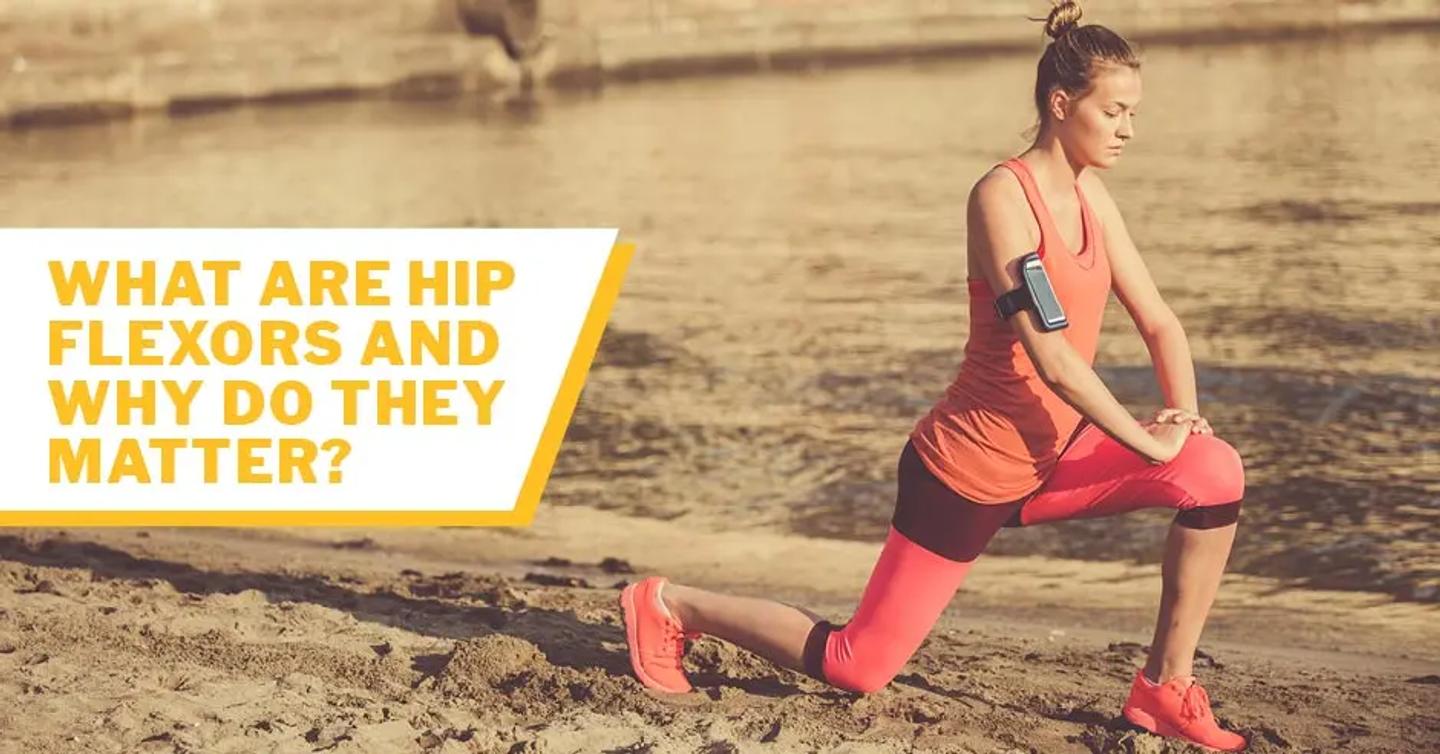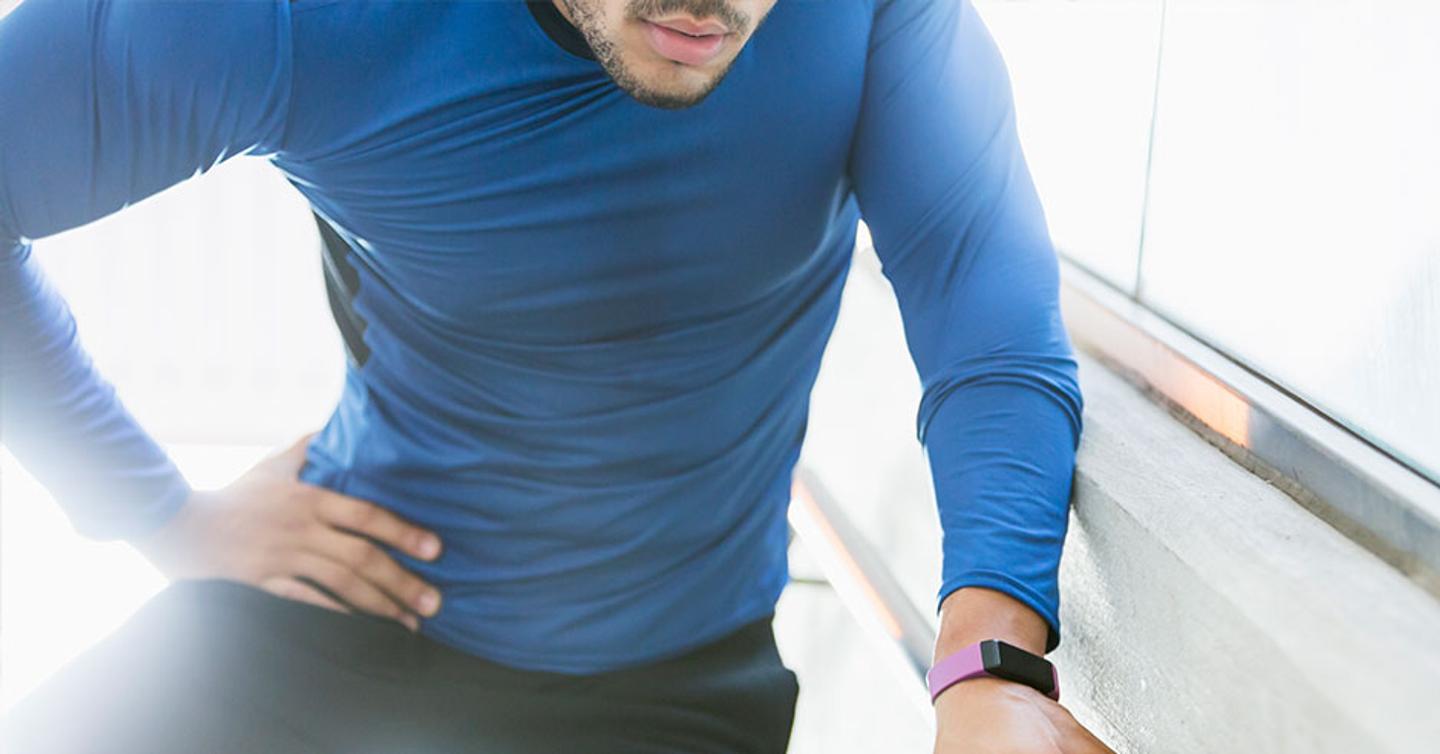
What Are Hip Flexors and Why Do They Matter?
Reading Time: 7 minutes 8 seconds
BY: ISSA
DATE: 2021-09-08
Your clients may have heard the term hip flexors but not understood exactly what it means. This important group of muscles controls hip flexion. When something goes wrong with them, the results can be pain, injury, and immobility.
With a good understanding of the causes and symptoms, you can help clients prevent hip flexor issues. For minor problems, like mild strains or tightness, provide them with exercises and stretches to help resolve the issue.
What Are Hip Flexors?
Not many people know about this important group of muscles. The hip flexors allow for flexion in the hip joint. This is the movement of the knees and legs toward the torso, decreasing the angle. During this type of movement, you activate the hip flexors and they contract, allowing you to bend at the joint.
You use the hip flexors to do a variety of movements, from walking to riding a bike. The group includes several muscles:
Psoas major. This is a muscle deep in the body connecting the spine to the leg. It runs from the lower back, through the pelvis, to the femur.
Iliacus. Often grouped with the psoas as the iliopsoas muscle, this small muscle connects the pelvis and femur. It assists with rotation of the upper leg.
Pectineus. Also called the groin muscle, the pectineus is flat and situated high up on the inner thigh. It plays a big role in flexion but also contributes to rotation and adduction.
Rectus femoris. This is a quadriceps muscle that runs from the pelvis to the knee.
Sartorius. The sartorius muscle also runs from the pelvis down to the knee. It's the longest muscle in the body.
All these muscles contribute to the flexion action of the hip joint. So many functional and athletic movements depend on flexion. When something goes wrong with one or more muscles in the group, it can be painful and even debilitating.
Your clients may have a variety of issues with their hip flexors. The most common include strains, tight hip flexors, and weak hip flexors. Help them identify the problem based on symptoms and correct it with stretches, exercises, rest, and prevention.
Hip Flexor Strain and Injury
You can injure the hip flexors through a strain, which is an overstretching and tearing in one or more of the muscles. The strain can range from mild to severe, depending on the severity of the tear, graded from I to III.
Symptoms of a Strain
A severe strain in the hip flexors is not common, but you'll know it's happened. It prevents you from walking without limping. More moderate or mild strains are less serious and have subtler symptoms:
Pain as you bend at the hip flexors and that increases as you lift your legs toward your chest
Pain when stretching the hips
Hip or thigh muscle spasms
Sudden pain in the hip area
Swelling or bruises in the hip
Tenderness when you touch the front of the hips
Pain when walking, running, or engaging in other activities
Causes of Hip Flexor Injury
Most hip flexor strains result from overuse. Activities that involve jumping, running, high knee kicks, and stretching the leg backward are more likely to cause a strain. Some of the sports that put you at the greatest risk include soccer, football, running, cycling, dancing, martial arts, and hockey.
It's also possible to strain the hip flexors acutely, for instance, when active in one of these sports. One movement can overstress the muscles and cause an injury. You can also get a strain from an accident, such as slipping and falling.
Hip Flexors Strain Treatment and Prevention
Prevention, as always, is the best medicine. You can reduce the risk of a strain by avoiding overuse. Take necessary time out from your favorite activities to rest and recover. Diversify your exercise routines. You can also limit the risk by warming up properly before engaging in any physical exercise.
People who are inactive also put themselves at risk for hip flexor strains. Sitting all day leads to both weak and tight muscles in this area. When they do get up to get active, they're more likely to get hurt. Encourage new clients with hip issues to use standing desks or get up for walking breaks throughout the day.
Unfortunately for those who love to exercise, the best treatment for most hip flexor strains is rest and recovery. Use rest, ice, compression, and elevation to manage the injury as you recover. If you have significant pain or immobility, you should see a doctor.
Tight Hip Flexors
Our largely sedentary lifestyle has triggered an epidemic of tight hip flexors, which are not just uncomfortable but can also increase injury risk. Most people can benefit from addressing this issue, but not everyone. Help clients identify tight hip flexors so you can recommend solutions.
How to Identify Tight Hip Flexors
The most obvious sign of tight hip flexors is that they feel tight. If you try to stretch them, and it hurts or your range of motion is limited, they're tight and shortened. Of course, as with many things in the body, tight muscles here cause symptoms elsewhere:
Lower back pain and tightness, especially standing
Neck pain and tightness
Difficulty standing up straight with good posture
Glute pain
If you're still not sure, use this test for yourself or a client. Lie on a bench or table with your legs hanging over the edge and feet not touching the floor. Lift one knee toward your chest and let the other leg relax over the edge of the table. If the relaxed leg begins to lift with the other leg, those hip flexors are tight. You should be able to keep that leg down.
What Leads to Tight Hip Flexors?
The primary cause of tightness in the hips is inactivity and, specifically, sitting. This is why so many people struggle with tight hip flexors. Even if you play sports or workout daily, sitting for hours can cause tight muscles. Some sports exacerbate tight hips. Running and cycling, for instance, repeatedly shorten the hip flexors.
Stretches for Tight Hip Flexors
To prevent tight hip flexors, avoid sitting for too long. If you work at a desk, try standing to work for part of the day. If that's not possible, take frequent breaks to stand and stretch. Here are some great stretches to loosen up the hip flexors:
Butterfly stretch. This is a good place to start. Sit on the floor with knees bent and the bottoms of your feet pressed together. Let the knees fall apart and toward the floor until you feel a stretch. Don't force it. As you get looser, try this same stretch but lying on your back rather than sitting.
Low lunge. Also known as a runner's stretch, get into lunge position for this one. Keep the front knee at a 45-degree angle and lower the hips toward the floor, stretching the other leg back. Keep your chest upright. You should feel a stretch in the front of the hip of the extended leg. To increase the stretch, gently rest that back knee on the floor.
Pigeon pose. If you know yoga, you know this stretch. Start on hands and knees and pull one knee forward, bent under the torso. Stretch the other leg behind you. This can be tough to do if muscles are very tight, so work up to it.
Foam rolling. Rolling your tight hip flexors can also loosen them up and lengthen them after a long session of sitting.
Here are more stretches and ideas for correcting tight hip flexors.

Weak Hip Flexors
Weakness in the hip muscles can cause just as much pain as tightness. When the hip flexors are too weak, other muscles overcompensate. This leads to pain, imbalanced movements, and risk of injury.
Signs of Weak Hip Flexors
Weak hip flexors show up in other parts of the body. As other muscles compensate for the weakness, you can experience pain in the lower back, knees, and other areas of the hips. You may also have a stiff gait and poor posture with weak hip flexors.
You can test for weakness with a few movements. You should be able to sit in a chair and easily lift one knee at a time toward your chest. Lying on the floor, pull one knee toward your chest and then hold it there without the use of your arms. If you can't do these things, your hip flexors may be weak.
What Causes Weakness?
Sitting can contribute to weakness as it does to tightness, but more important is overall lack of activity. If you are inactive or sedentary, these muscles will weaken. Medical conditions can also cause weakness here, including osteoarthritis, cerebral palsy, and spinal surgeries.
How to Strengthen Hip Flexors
It's important to distinguish between weak and tight hip flexors in your clients. Adding strength exercises can shorten the muscles, making tightness even worse. Tight muscles are a more common problem, but if you do have a client with weak hip flexors, try these exercises:
Standing knee lifts. While standing, bend one knee to a right angle. Lift the knee until the top of the leg is parallel to the floor. Lower it and repeat on the other side.
Mountain climbers. In plank position, drive one knee toward the chest. Repeat with the other leg.
Resistance band exercises. Use a resistance band around the ankles to strengthen the hips. Standing with feet hip-width apart, step one leg out to the side until you feel resistance in the band. Repeat on the other side.
Core and glute exercises. Also provide clients with core and glute exercises. Strength in these areas supports the hip flexors and encourages good form.
Check out this post on glute activation to learn how this issue affects the rest of the body and how you can correct it.
The hip flexors are important and too often overlooked. If your clients have pain or immobility in other areas, consider if the hips are to blame. Good prevention and easy exercises and stretches can solve a myriad of hip flexor issues.
ISSA's Certified Personal Trainer - Self-Guided Study Program includes all the important functional anatomy for physical fitness and training. Learn about hip flexors and so much more as you begin your career as a pro trainer.